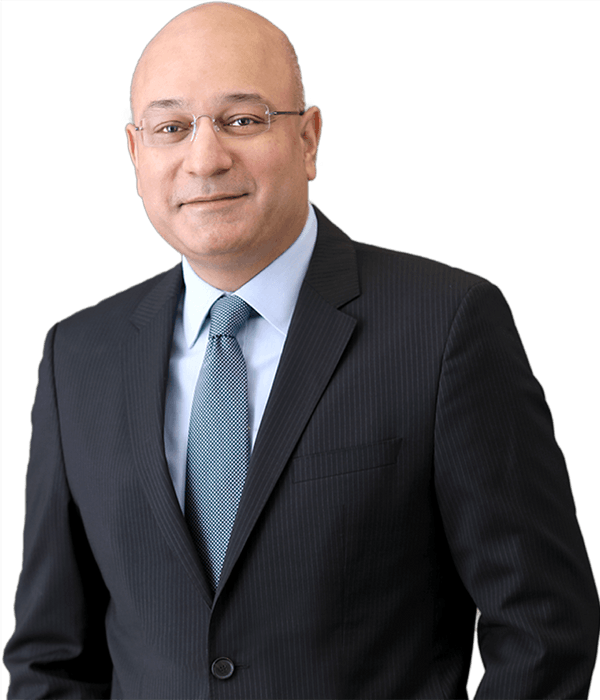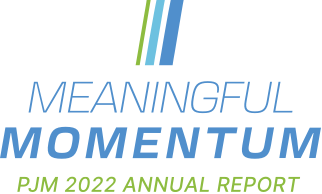
CEO
LETTER
To Our Members, Stakeholders & employees
In 2022, PJM and our stakeholders remained focused on our core mission – to preserve grid reliability in our region of 13 states and Washington, D.C., both today and in the future as we progress through the energy transition.
This steadfast focus on reliability remains essential given significant challenges posed by extreme weather, global supply chain disruptions, accelerating retirements of thermal generation driven by policy and economic pressure, anticipated load growth related to electrification and data centers, and an industry transitioning to less dispatchable, more dispersed forms of generation.
In 2022, PJM continued to analyze the needs of the evolving grid with a focus on helping to facilitate the ongoing energy transition reliably and cost-effectively, using our technical expertise, our significant scale and the power of our competitive markets. PJM, our members and our stakeholders made meaningful progress on these issues in 2022.
Our work together in 2022 on these matters, and more, creates a strong foundation for the work that still remains to be done to ensure a reliable and cost-effective energy transition.
PJM remains committed to working with our members and stakeholders to find solutions to help ensure bulk power system reliability through the energy transition for the benefit of the 65 million people we serve.
Sincerely,
Manu Asthana
President & CEO
CEO
Letter

To Our Members, Stakeholders, & employees
In 2022, PJM and our stakeholders remained focused on our core mission – to preserve grid reliability in our region of 13 states and Washington, D.C., both today and in the future as we progress through the energy transition.
This steadfast focus on reliability remains essential given significant challenges posed by extreme weather, global supply chain disruptions, accelerating retirements of thermal generation driven by policy and economic pressure, anticipated load growth related to electrification and data centers, and an industry transitioning to less dispatchable, more dispersed forms of generation.
In 2022, PJM continued to analyze the needs of the evolving grid with a focus on helping to facilitate the ongoing energy transition reliably and cost-effectively, using our technical expertise, our significant scale and the power of our competitive markets. PJM, our members and our stakeholders made meaningful progress on these issues in 2022. Some highlights include:
- FERC’s approval of PJM’s interconnection reform proposal, which was developed in close collaboration with our stakeholders, sets the stage for significantly improved interconnection queue throughput. The final plan reorients the interconnection process from first-in, first-served to first-ready, first-served and creates milestones and commitments to ensure we are working on the most viable projects. A fast-track transition process will allow projects with little impact to the system to move more quickly through the process and to move more new resources onto the system.
- New Jersey’s final selection of proposals to build transmission upgrades for at least 7,500 MW of future offshore wind projects. Utilizing PJM’s competitive planning process through the unique State Agreement Approach, the New Jersey Board of Public Utilities evaluated 80 separate proposals before choosing a package of proposals. PJM expects to continue working with the NJBPU as it implements additional offshore wind goals, and we continue to look for ways to collaborate with all of our states on the achievement of their policy objectives.
- PJM contributed extensive comments on long-term planning reform and submitted a compliance filing for FERC Order 2222, which calls for broader integration of distributed resources into operations and markets.
- PJM submitted a Quadrennial Review filing, which was developed with significant input from stakeholders starting early in the process. This input helped inform our recommendations for reforming the calculations for key drivers of the Variable Resource Requirement Curve, which determines the capacity price and procurement levels.
- PJM developed and implemented a Historical Simulation for Initial Margin (HSIM) calculation in the FTR Market to help reduce the risk of default and ensure collateral adequacy. This effort included extensive testing and backtesting. Following an August ruling by FERC, PJM implemented HSIM in September at the 97% confidence interval in the FTR Market.
- The Resource Adequacy Senior Task Force (RASTF) met throughout 2022. Stakeholders explored high-level concepts for capacity market constructs from many industry perspectives. In all, the RASTF advanced work on eight key activities.
Our work together in 2022 on these matters, and more, creates a strong foundation for the work that still remains to be done to ensure a reliable and cost-effective energy transition.
PJM remains committed to working with our members and stakeholders to find solutions to help ensure bulk power system reliability through the energy transition for the benefit of the 65 million people we serve.
Sincerely,
Manu asthana
President & CEO

